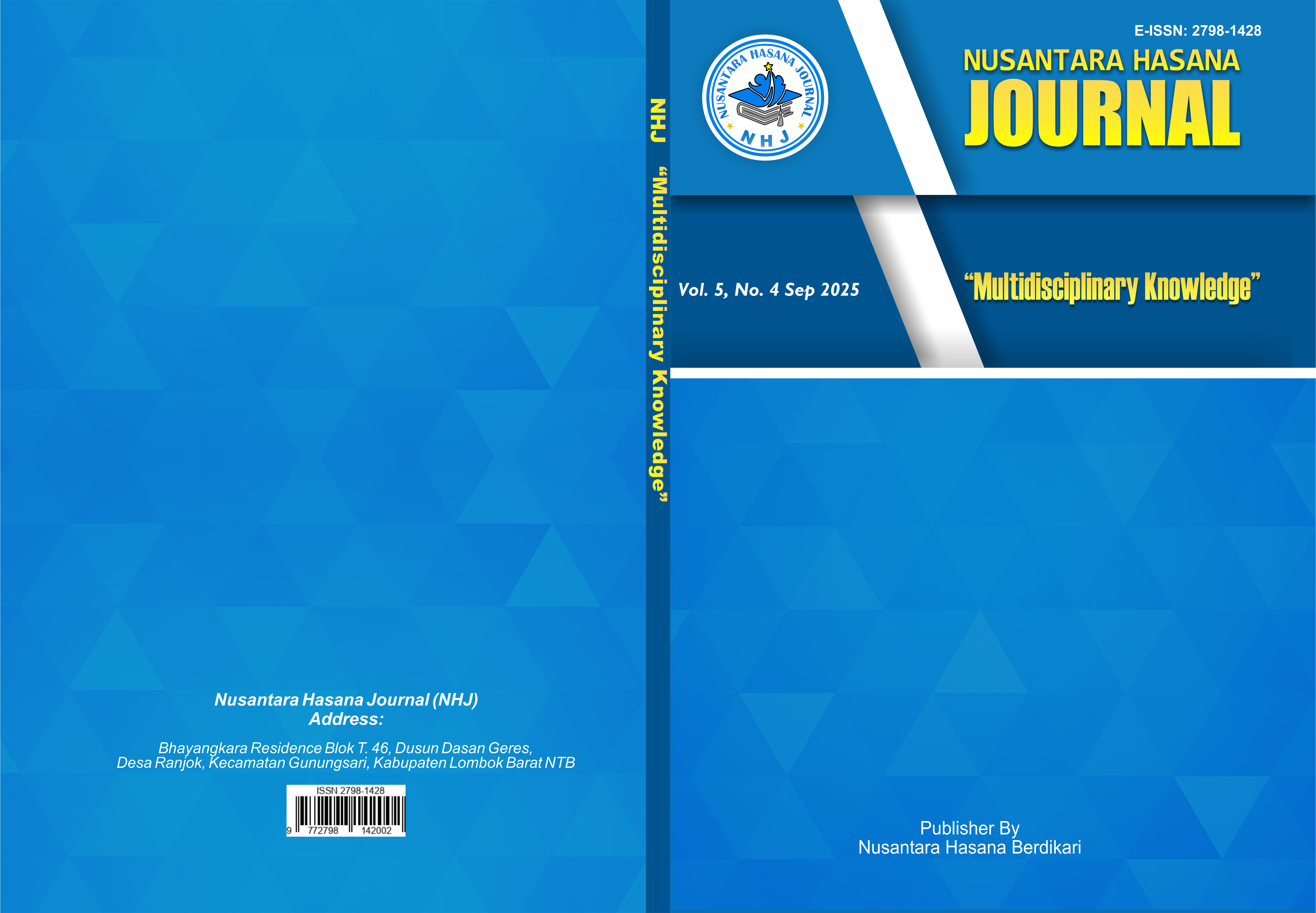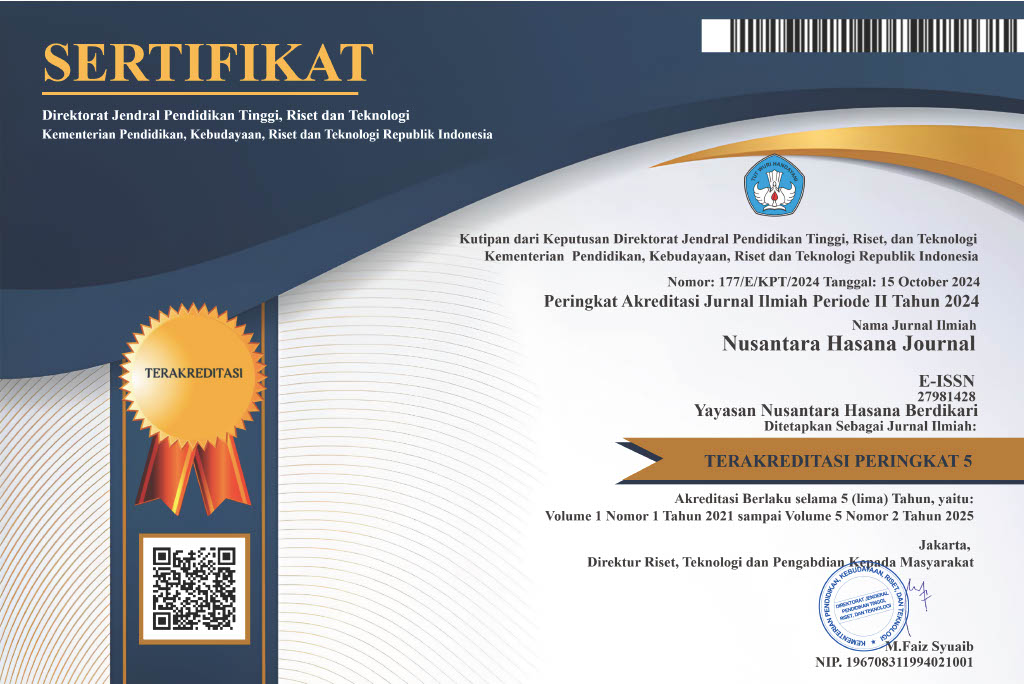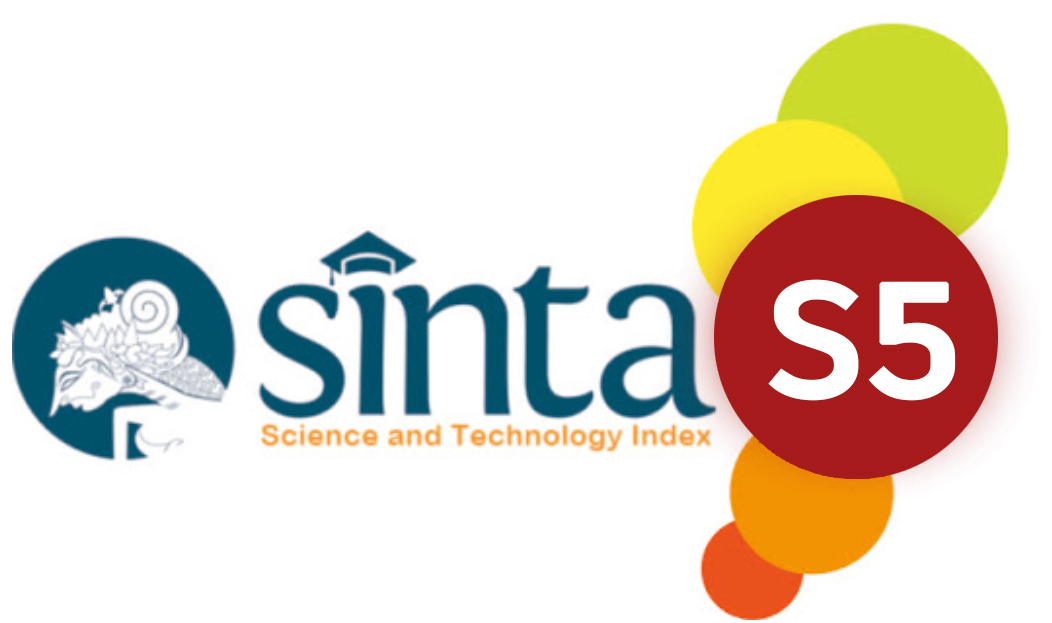IN SILICO STUDY INVESTIGATING TO KEAP1-KELCH INHIBITORY POTENTIAL OF PLUCHEA INDICA LEAVES BIOACTIVE COMPOUNDS
DOI:
https://doi.org/10.59003/nhj.v5i4.1704Keywords:
ADMET, Antioxidant, In silico, Pluchea indicaAbstract
Pluchea indica (beluntas) is a herbal drug candidate that has a high antioxidant capacity. This research reports the analysis of ligand-protein interactions, drug-like properties, biological activity, and prediction of ADMET profile of bioactive compounds contains in P. indica leaves as antioxidants. The interaction of the ligand-KEAP1 resulted in the lowest binding affinity value for the stigmasterol compound with a weight of -12.1 Kcal/mol with several chemical bonds formed and produced amino acid residues. Analysis of drug-like properties using SwissADME showed that P. indica complied with all parameters of Lipinski's rule. Biological activity with online PASS test showed high biological activity as an antioxidant. Finally, prediction of ADMET profile using admetSAR showed that P. indica had good pharmacological criteria.
Downloads
References
Abed, DA., Goldstein, M., Albanyan, H., Jin, H. & Hu, L. ( 2015) . Discovery of direct inhibitors of Keap1–Nrf2 protein–protein interaction as potential therapeutic and preventive agents. Acta Pharm Sin B 5: 285–299
Andarwulan, N., Batari, R., Sandrasari, DA., Bolling, B. & Hanny, W. (2010). Flavonoid content and antioxidant activity of vegetables from Indonesia. Journal of Food Chemistry 121: 1231-5
Bare, Y., S, M., Tiring, S. S. N. D., Sari, D. R. T., & Maulidi, A. (2020). Virtual Screening: Prediksi potensi 8-shogaol terhadap c-Jun N-Terminal Kinase (JNK). Jurnal Penelitian Dan Pengkajian Ilmu Pendidikan. E-Saintika 4(2) : 1–6
Aristyani, S., Muhammad, IN., Sri, W., Sutiman, BS. (2018). In silico study of active compounds ADMET Profiling in Curcuma xanthorrhiza Roxb and Tamarindus indica as Tuberculosis Treatment. Jurnal Jamu Indonesia 3 (3): 101-108
Canning, P., Sorrel, FJ. & Bullock, AN. (2015). Structural basis of Keap1 interactions with Nrf2. Free Radical Biology and Medicine 88: 101-107
Chelliah, DA. (2008). Biological Activity Prediction of an Ethno Medicinal Plant Cinnamomum camphora Through Bio-informatics. Ethnobotanical Leaflets 12: 181-190.
Dallakyan, S. & Olson, AJ. (2014). Small-Molecule Library Screening by Docking with PyRx. Chemical Biology 1263 : 243–250
Daneman, R & Alexandre, P. (2015). The bloodbrain barrier. Cold Spring Harb. Perspect. Biol, 7(1): a020412–a020412
Dayalan, S.N., Suzuki, T., Dikovskaya D., Knatko, V.M., Higgins, M., Sato, M., Novak, M., Villegas, J.A., Moore, T.W., Yamamoto M. & Kostova, A.T.D. (2020). The isoquinoline PRL-295 increases the thermostability of KEAP1 and distrupts its interaction with Nrf2. Iscience 25 (1) : 1-19
David, JA., Rifkin, WJ., Rabbani, PS. & Ceradini, DJ. (2017). The Nrf2/Keap1/ARE Pathway and Oxidative Stress as a Therapeutic Target in Type II Diabetes Mellitus. Journal of Diabetes Research 2017 : 1-15
Filimonov, DA., Lagunin, AA., Gloriozova, TA., Rudik, AV., Druzhilovskii, DS., Pogodin, PV. & Poroikov, VV. (2014). Prediction of The Biological Activity Spectra of Organic Compounds Using The Pass Online Web Resource. Chemistry of Heterocyclic Compounds 50 (3): 444-457
Hudha, M. & Tri, DW. (2015). Serbuk Effervescent Berbasis Ekstrak Dan Beluntas (P. indica less) sebagai Sumber Antioksidan Alami. Jurnal Pangan dan Agroindustri 3 (4): 1412-1422
Itoh, K., Wakabayashi, N., Katoh, Y. (1999). Keap1 represses nuclear activation of antioxidant responsive elements by Nrf2 through binding to the amino-terminal Neh2 domain. Genes & Development 13 (1): 76–86.
Kastritis, PL. & Bonvin, AMJJ. (2012). On the binding affinity of macromolecular interactions: daring to ask why proteins interact. J R Soc Interface 10 : 1-27
Lipinski, CA, 2000. Drug-like properties and the causes of poor solubility and poor permeability. J. Pharmacol. Toxicol. Methods 44 (1): 235–249
Paramashiwam, SK., Elayaperumal, K., Natarajan, BB., Ramamoorthy, MD., Balasubramanian, S. & Dhiraviam, KN. (2015). In silico pharmacokinetic and molecular docking studies of small molecules derived from Indigofera aspalathoides Vahl targeting receptor tyrosine kinases. Bioinformation 11(2): 73-84
Shan, J., He, H., Li, M., Zhu, J., Cheng, Y., Hu, N., Wang, G., Wang, D., Yang, X., He, Y., Xiao, H., Tong, W., Yang, Z. (2015). APE1 promotes antioxidant capacity by regulating Nrf2 function through a redox-dependent mechanism. Free Radic. Biol. Med 78: 11-22.
Taguchi, K., Motonashi, H., Yamamoto, M. (2011). Molecular Mechanism of the Keap1-Nrf2 Pathway in Stress Response and Cancer Evolution. Genes to Cells 16(2): 123-140
Vongsak, B., Kongkiatpaiboon, S., Jaisamut, S. & Konsap, K. (2018). Comparison of active constituents, antioxidant capacity, and α-glucosidase inhibition in P. indica leaf extracts at different maturity stages. Food Bioscience 25: 68-73.
Xing, HY., Cai, YQ., Wang, XF., Wang, LL., Li, P., Wang, GY. & Chen, JHJPO. (2015). The cytoprotective effect of hyperoside against oxidative stress is mediated by the Nrf2-ARE signaling pathway through GSK-3ß inactivation. PLoS One 10(12): 1-19.
Downloads
Published
How to Cite
Issue
Section
License
Copyright (c) 2025 Ria Rismawati

This work is licensed under a Creative Commons Attribution-NonCommercial-ShareAlike 4.0 International License.
NHJ is licensed under a Creative Commons Attribution-NonCommercial-ShareAlike 4.0 International License.
Articles in this journal are Open Access articles published under the Creative Commons CC BY-NC-SA License This license permits use, distribution and reproduction in any medium for non-commercial purposes only, provided the original work and source is properly cited.
Any derivative of the original must be distributed under the same license as the original.
























